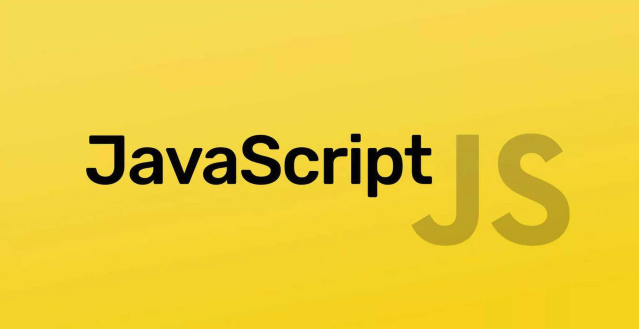Reflect是什么?Reflect常用方法解析
时间:2025-08-18 21:16:12 466浏览 收藏
想知道**Reflect是什么**?本文深入解析JavaScript中的Reflect对象,这是一个内置工具对象,用于拦截和自定义对象操作。与Proxy处理器方法相同,Reflect的所有方法均为静态。我们将详细讲解`Reflect.get()`、`Reflect.apply()`、`Reflect.defineProperty()`和`Reflect.has()`等关键方法,并通过实例对比它们与直接属性访问、`Function.prototype.apply`、`Object.defineProperty`和`in`操作符的区别。了解Reflect如何通过控制`this`指向、提供更清晰的函数调用方式、返回布尔值表示操作成功与否,以及精确检查对象自身属性,从而提升代码的可控性和容错性,尤其是在与Proxy结合使用时,能实现强大的元编程能力。
Reflect是JavaScript中用于拦截对象操作的内置工具对象,其方法与Proxy处理器相同且均为静态。Reflect.get()可通过receiver参数灵活控制this指向,尤其在继承场景中优于直接属性访问的固定this绑定。Reflect.apply()提供更明确的函数调用方式,支持精准设置this值和参数列表,并便于错误捕获。Reflect.defineProperty()返回布尔值表示操作是否成功,避免抛出异常,提升属性定义的容错性。Reflect.has()仅检查对象自身属性,不遍历原型链,相比in操作符更精确。这些特性使Reflect与Proxy结合时可实现强大而可控的元编程能力。

Reflect本质上是一个内置对象,它提供拦截 JavaScript 操作的方法。这些方法与proxy handlers的方法相同。Reflect不是一个构造函数,所以不能用 new 操作符来调用。它的所有属性和方法都是静态的。你可以把它看作是一个工具箱,里面装着各种与对象操作相关的工具。
Reflect提供了一种更清晰、更可控的方式来执行对象操作,特别是在处理错误和异常时。它与Proxy结合使用,可以实现强大的元编程能力。
Reflect.get() 和直接访问属性有什么区别?
Reflect.get(target, propertyKey, receiver) 允许你指定 this 的值(receiver),这在处理继承和原型链时非常有用。直接访问属性(target.propertyKey)总是使用 target 作为 this 的值。
例如:
const obj = {
name: 'Original',
getGreeting() {
return `Hello, I'm ${this.name}`;
}
};
const proxyObj = new Proxy(obj, {
get(target, propertyKey, receiver) {
console.log(`Intercepted get: ${propertyKey}`);
return Reflect.get(target, propertyKey, receiver); // receiver is proxyObj
}
});
const anotherObj = {
name: 'Another',
};
anotherObj.greeting = proxyObj.getGreeting;
console.log(anotherObj.greeting()); // 输出 "Hello, I'm Another" (receiver影响了this)
console.log(proxyObj.getGreeting()); // 输出 "Hello, I'm Original"如果使用 target[propertyKey] 代替 Reflect.get(target, propertyKey, receiver),那么 this 将始终指向 obj,即使是从 proxyObj 或 anotherObj 调用的。
Reflect.apply() 如何改进函数调用?
Reflect.apply(target, thisArgument, argumentsList) 允许你以一种更明确的方式调用函数,并控制 this 的值和参数。它避免了使用 Function.prototype.apply 或 Function.prototype.call 时可能出现的歧义和错误。
考虑一个场景,你需要调用一个函数,并且需要捕获任何可能抛出的错误:
function myFunction(a, b) {
if (a < 0 || b < 0) {
throw new Error("Arguments must be non-negative");
}
return a + b;
}
try {
const result = Reflect.apply(myFunction, null, [5, -2]);
console.log(result);
} catch (error) {
console.error("Error occurred:", error.message); // 输出 "Error occurred: Arguments must be non-negative"
}使用 Reflect.apply 可以更清晰地表达你的意图,并且更容易处理异常。
Reflect.defineProperty() 的返回值有什么意义?
Reflect.defineProperty(target, propertyKey, attributes) 尝试在对象上定义一个新属性或修改现有属性。与 Object.defineProperty() 不同,Reflect.defineProperty() 返回一个布尔值,指示操作是否成功。如果操作失败(例如,尝试在不可扩展的对象上定义属性),它不会抛出错误,而是返回 false。
const obj = {};
const success = Reflect.defineProperty(obj, 'name', {
value: 'Reflect',
writable: false,
configurable: false,
enumerable: true
});
console.log(success); // 输出 true
console.log(obj.name); // 输出 "Reflect"
const sealedObj = Object.seal({});
const fail = Reflect.defineProperty(sealedObj, 'age', { value: 30 });
console.log(fail); // 输出 false这种返回值机制允许你更优雅地处理属性定义失败的情况,避免使用 try...catch 块。
Reflect.has() 和 in 操作符有什么区别?
Reflect.has(target, propertyKey) 用于检查对象是否具有某个属性。它与 in 操作符类似,但 Reflect.has() 不会遍历原型链。
考虑以下例子:
const obj = { name: 'Reflect' };
const proto = { age: 30 };
Object.setPrototypeOf(obj, proto);
console.log('name' in obj); // 输出 true
console.log('age' in obj); // 输出 true
console.log(Reflect.has(obj, 'name')); // 输出 true
console.log(Reflect.has(obj, 'age')); // 输出 false (Reflect.has 不遍历原型链)Reflect.has() 提供了一种更精确的方式来检查对象自身是否具有某个属性,而无需考虑原型链。在某些情况下,这可以避免意外的结果。
今天带大家了解了的相关知识,希望对你有所帮助;关于文章的技术知识我们会一点点深入介绍,欢迎大家关注golang学习网公众号,一起学习编程~
-
502 收藏
-
501 收藏
-
501 收藏
-
501 收藏
-
501 收藏
-
331 收藏
-
297 收藏
-
429 收藏
-
151 收藏
-
343 收藏
-
152 收藏
-
220 收藏
-
307 收藏
-
260 收藏
-
150 收藏
-
341 收藏
-
324 收藏
-

- 前端进阶之JavaScript设计模式
- 设计模式是开发人员在软件开发过程中面临一般问题时的解决方案,代表了最佳的实践。本课程的主打内容包括JS常见设计模式以及具体应用场景,打造一站式知识长龙服务,适合有JS基础的同学学习。
- 立即学习 543次学习
-

- GO语言核心编程课程
- 本课程采用真实案例,全面具体可落地,从理论到实践,一步一步将GO核心编程技术、编程思想、底层实现融会贯通,使学习者贴近时代脉搏,做IT互联网时代的弄潮儿。
- 立即学习 516次学习
-

- 简单聊聊mysql8与网络通信
- 如有问题加微信:Le-studyg;在课程中,我们将首先介绍MySQL8的新特性,包括性能优化、安全增强、新数据类型等,帮助学生快速熟悉MySQL8的最新功能。接着,我们将深入解析MySQL的网络通信机制,包括协议、连接管理、数据传输等,让
- 立即学习 500次学习
-

- JavaScript正则表达式基础与实战
- 在任何一门编程语言中,正则表达式,都是一项重要的知识,它提供了高效的字符串匹配与捕获机制,可以极大的简化程序设计。
- 立即学习 487次学习
-

- 从零制作响应式网站—Grid布局
- 本系列教程将展示从零制作一个假想的网络科技公司官网,分为导航,轮播,关于我们,成功案例,服务流程,团队介绍,数据部分,公司动态,底部信息等内容区块。网站整体采用CSSGrid布局,支持响应式,有流畅过渡和展现动画。
- 立即学习 485次学习
